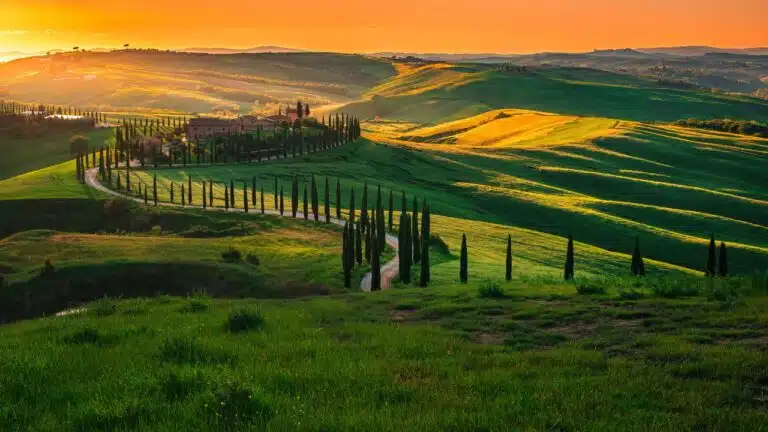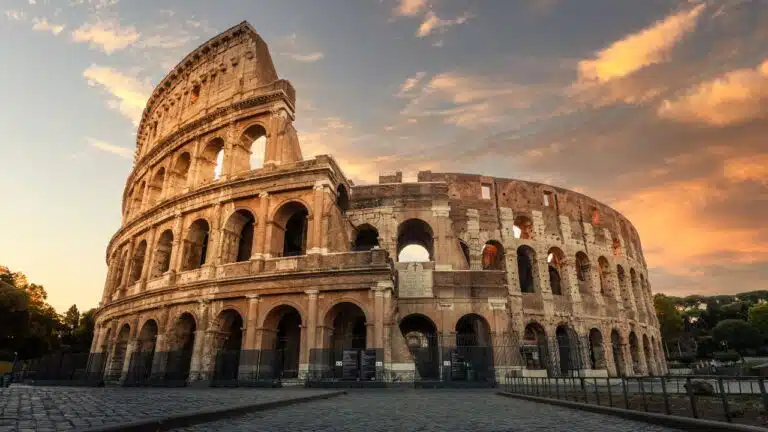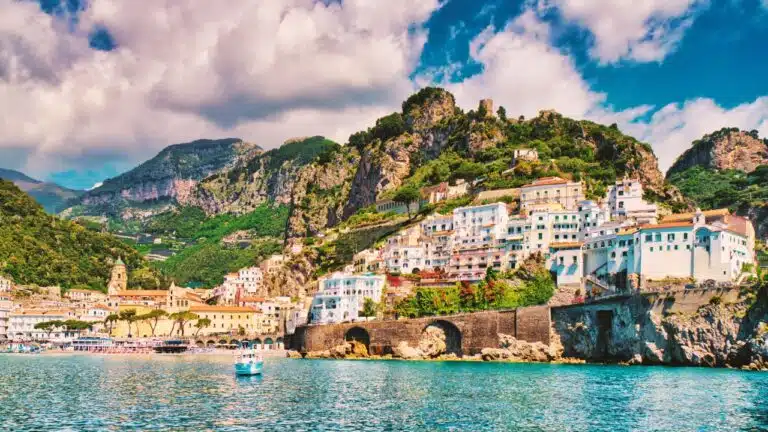Japan’s vibrant capital is the city that never sleeps. Fast-paced, fun, and overflowing with festivals, food, and things to do, Tokyo is brilliant at any time of year. So whether you’re interested in seeing the iconic cherry blossoms or taking the family to Tokyo Disneyland, there’s something for everyone at any time. But if you’re looking for the best time to visit this beautiful city, here is your quick guide to Tokyo weather, festivals, and more to experience the sights and sounds in the perfect season.
Table of Contents
- The Weather in Tokyo
- Tokyo’s Most Popular Annual Events
- Know the Best Time to Go
- Tokyo Public Holidays and Occasions
The Weather in Tokyo
Four seasons mean four infinitely different versions of Tokyo to explore. The mild temperatures of spring and fall may be the most popular times to visit the city, but the great thing about Tokyo is that every season has its merits. So, plot your perfect time to go with this overview of the weather in Tokyo.
Spring (March to May)
Springtime in Tokyo sees the city thawing and swathing itself in shades of pink as the much-anticipated sakura (cherry blossom) trees begin flowering in the capital. The first blooms are usually seen around March 20. Temperatures are mild and pleasant during this time, averaging between 55°F and 75°F. The latter half of the three months lends itself to sunny days and warmer weather, although some light outerwear is advisable for the cooler morning and evening temperatures. With fewer crowds in late spring, it’s the best time to explore more of Tokyo and enjoy the other springtime blooms blossoming around the city.
Best Time to Visit Tokyo for Cherry Blossoms 🌸
Summer (June to August)
June marks the beginning of summer in Japan and the start of the rainy season (tsuyu), which arrives around mid-June. So don’t forget to bring an umbrella as you wander Tokyo’s bustling streets. Come mid-July, the rain gives way to hotter and more humid weather, sometimes reaching as high as 88°F, making sightseeing a bit of a sweaty endeavor. But with the dryer and warmer weather, hiking routes on Mt. Fuji open, and summer festivals take center stage.
Best Time to Visit Tokyo for Festivals 🎆
Fall (September to November)
As the summer heat dissipates, exploring the city gets a little easier. Cool fall weather swoops in to bring the temperatures down from scalding to a much more bearable 80°F in September, a downright pleasant 72°F in October, and a breezy 60°F in November. On top of the mild weather, the latter half of the season sees the city dotted with beautiful autumn leaves in a fiery showcase of color. This time of year is popular for park visits and garden strolls due to the beautiful scenery and fun chrysanthemum festivals celebrated at temples and shrines. Though some rainy days slip in, for the most part, fall is mild and dry.
Best Time to Visit Tokyo for Fall Foliage 🍂
Winter (December to February)
Prepare for a chill in the air and then some. Temperatures in winter range from cool to cold, especially at night, but the days remain pleasant enough to sightsee. January and February tend to be colder, with temperatures that can plummet as low as 0°F but climb to 50°F later in the day. Despite the frigid temperatures, winter is usually clear. Tokyo only sees a handful of light snow days, so even with the winter chill, many travelers enjoy the mild warmth that the winter sun brings, along with the quieter atmosphere of the low-season crowds. Even the cold evenings have their charms, with fun illumination festivals lighting up the dark winter nights.
Best Time to Visit Tokyo for Illuminations 🎄
Tokyo’s Most Popular Annual Events
Lacking isn’t a word anyone would use to describe Tokyo’s annual events. The dynamic city hosts a near-endless number of festivals and celebrations, from the typical shrine parades to the ever-surprising samba competitions. If you’re planning a visit to Tokyo, you can’t ignore the biggest festivals and, consequently, the best times to visit and experience the magic of Japan’s capital.
Cherry Blossom Festivals (Early April)
Tokyo officially sheds its white winter coat for a pink one come late March. At the end of March, cherry blossoms bloom all over Tokyo, ushering in the much-anticipated hanami (cherry viewing) festivals that make this season shine.
Festivals occur all over the city, usually in the first week of April. Along the Sumida River, boat tours sail under the blossoming trees, and a stroll through the Rikugien Gardens promises the enchanting sight of weeping cherry trees in full bloom. A must-attend event is the Ueno Sakura Matsuri, a festival held in Ueno Park that is famous across Japan for the beautiful white cherry blossom trees lining the water.
Kanda Matsuri (Early May)
The Kanda Matsuri is one of Tokyo’s three major Shinto festivals. Due to the sheer intensity of the festival during the Edo period, the shogun decreed it could not take place every year, so it is now held every odd-numbered year.
The highlight is a huge parade that takes place on Saturday. Giant floats, musicians, portable shrines, and monks riding horseback flood the streets of Tokyo’s old neighborhoods to celebrate. It’s all centered around the Kanda-jinja Shrine, a nearly 1,300-year-old shrine associated with good fortune.
Along with the festivities, stalls dot the streets, selling savory foods like oyaki, a dumpling filled with red bean paste, and sweet treats like fruits dipped in toffee, bananas covered in chocolate, and kushiyaki dango, a mochi-based snack.
Sanja Matsuri (Late May)
Celebrated on the third weekend in May every year at the Asakusa Shrine, the Sanja Festival is one of Tokyo’s largest and wildest events. Over two million spectators take part in the festivities every year, and with free admission, we can’t blame them. Fun festival games and tasty food stalls line the street, while joyous celebrations fill the air.
The event spans three days, each featuring a mikoshi (portable shrine) parade. Friday showcases a captivating procession of geisha, priests, and officials dressed in Edo-period costumes, while Saturday boasts over 100 neighborhood shrines bringing good fortune to the area. The festivities conclude with a bang on Sunday, starting with a competition between neighborhood teams to carry the three main mikoshi, followed by a parade through the city streets. The final day also features shrine maiden dances and drum performances at Asakusa Shrine.
Sanno Matsuri (Mid-June)
This grand festival is another of the major three in Tokyo and is only held in full on even-numbered years, in contrast to Kanda Matsuri. The Sanno Matsuri takes place over eleven days with small events held at Hie-jinja Shrine, including dance performances, drum performances, and even a small parade of children dressed as court pages.
But the main attraction is the grand parade. Starting and ending at Hie-jinja shrine, the parade meanders through the streets of central Tokyo, with hundreds of people dressed in traditional clothing carrying floats decorated with animals and playing drums. The three main mikoshi appear during the parade, a phoenix atop each shrine roof. The whole event lasts roughly nine hours, making it a massive, all-day celebration.
Shonan Hiratsuka Tanabata Festival (Early July)
The Shonan Hiratsuka Tanabata Festival is one of the biggest star festivals in the Kanto region. The festival marks the beginning of summer and brings the normally sleepy Shonan area to life with over 400 stalls and countless decorations, including tanzaku (paper ornaments), streamers, and even towering 10-meter ornaments. The decorations get lit up at night, illuminating the night sky just like stars.
Accompanying the colorful decorations are live performances held throughout the weekend, including the Tanabata Odori Sennin Parade, where one thousand dancers dressed in beautiful yukatas flood the streets to dance under the billowing streamers.
Sumidagawa Fireworks Festival (Late July)
The Sumidagawa Fireworks Festival is one of the oldest fireworks festivals, dating back to the 18th century. It takes place on the last Saturday of July and lights the sky above the Sumida River. Naturally, the river is the best place to see the spectacular fireworks, but Asakusa Station is another place that draws in the crowds. The two bridges near the station are also great spots for viewing the fireworks, but the drawback is that you are not allowed to stop for pictures.
The show is 90 minutes of nonstop action that kicks off around 7 p.m., but the festivities start long before, with people dressing up in yukatas and arriving early to nab the best spots and picnic along the river.
Asakusa Samba Carnival (Late August)
What happens when the winning team of Brazil’s Rio Carnival is invited to visit Japan in 1981? They inspire an entire country to fall in love with samba and create their own samba parade and competition.
The Asakusa Samba Carnival attracts nearly 3,500 samba enthusiasts from all over Japan to come and compete. There are generally three leagues. Leagues one and two allow participants to show off their fancy costumes and participate in the fun festivities. League Three is the top league filled with serious competitors who have devoted themselves to learning the Brazilian samba and creating their own original dances that require a high level of technical skill.
The festival lasts roughly six hours, but many arrive early with their own chairs to grab a spot and see the parade weave through town with decorative floats and dancers adorned in glittering, vibrant costumes.
Know the Best Time to Go
Tokyo is a paragon of entertainment and cultural discovery at any time of the year, whether you want to experience rich traditions and dive into fun pop culture spots or delight your taste buds and explore pretty parks. But some charms do lie in traveling at the right time. So, from low prices to good weather, here are some of the best times to visit Tokyo.
The Best Time to Visit Tokyo for Low Prices
The cheapest time to visit Tokyo is the low season in winter, just after the holidays end. Following the holiday spike in prices, mid-January to mid-March see lower rates on hotels and airfare.
September is also a good month for cheap flight tickets, and the West Coast often sees great deals out to Tokyo. Both September and October sport mild weather, pretty scenery, and reasonable accommodation prices, which all amount to a perfect time to go.
Next Vacay Pro-tip: Regardless of when you go, if you’re planning a trip to Tokyo, the best thing you can do for your wallet is book well in advance to avoid any last-minute price hikes, especially during peak times like late March and early April or around the holidays.
The Best Time to Visit Tokyo for Fewer Crowds
It should surprise no one that the best time to visit Tokyo for fewer crowds is during the low and rainy seasons. Despite the holiday illuminations, Tokyo remains relatively quiet in winter, outside of Christmas and New Year celebrations. Along with the lack of crowds, the clear skies and cheaper prices make this an appealing time to visit, with plenty to do around Tokyo, from ice skating to exploring temples and shrines.
The rainy season also drives away the crowds from mid-June to mid-July. The tradeoff for travelers is the sticky heat and overcast skies. But the rain doesn’t stop the fun festivals during this time, and visitors can always escape the rain by touring Japan’s rich museums and colorful indoor theme parks. Just remember to keep your rain jacket handy!
The Best Time to Visit Tokyo for Good Weather
The mild weather of spring and fall stands out as the best time to visit Tokyo to explore the city unencumbered by rain, snow, or sweltering heat. The chill of winter warms to pleasant temperatures and clear skies beginning in mid-March and lasting through early June. Similarly, in the fall, the hazy humidity and heat of summer finally give way to the crisp air and cooler temperatures of October and November.
The caveat of this gorgeous weather is that both seasons are highly coveted for their showcase of colors, pink cherry blossoms in spring and fiery hues in fall. If you want to enjoy the weather while avoiding the crowds and high-season pricing, plan to visit on the edges of these seasons, from May to mid-June in the spring and September in the fall.
The Best Time to Visit Tokyo to See Cherry Blossoms
The best time to visit Tokyo to see cherry blossoms is in late March and early April. During this time, thousands of trees bloom all over Tokyo, dusting the city in pink and white petals like a springtime snow shower.
Residents of Tokyo eagerly await the national cherry blossom forecast to plan their hanami parties (flower viewings), and festivals arrive in full swing. Some popular places for viewing the beautiful cherry blossoms are Ueno Park, Sumida Park, Chidorigafuchi, Tokyo Midtown, and Nakameguro. Wherever you elect to go, plan to go early to get a prime spot to soak in the beauty and enjoy the festivities that accompany this beloved time of year.
The Best Time to Visit Tokyo to Go to Disneyland
Familiar Disney magic amidst the enchantment of Japan’s cultural traditions makes for an unforgettable trip. The parks are open year-round, allowing visitors to experience thrilling rides, lively parades, and delightful character encounters every day of the year.
But while this bucket list destination comes with plenty of Disney magic, it’s often accompanied by large crowds. If you want to avoid the throngs, the best time to go is between mid-September and November or January and March. Visiting in the fall guarantees dry, pleasant weather, while a visit at the start of the year promises a bit of wintry charm.
Tokyo Public Holidays and Occasions
The best time to visit Japan, and by extension, its capital city, depends on many different factors. But in general, it’s best to avoid Tokyo during peak travel seasons and holidays unless you want to join in the festivities. Major Japanese holidays, like Golden Week (late April to early May), can mean even bigger crowds and potential issues with public transport.
In addition, holidays like Obon, an August holiday seen as a time for family reunion, and Halloween, which sees massive crowds of people take to the streets in amazing costumes, can be some of the worst or best times to visit Tokyo, depending on your plans.
So get in on the holiday action or plan a quieter vacation getaway, but don’t miss a single chance to visit this incredible city. Sign up for the Next Vacay newsletter and get all the best flight deals to Tokyo delivered right to your inbox.



